Year 2
The English curriculum is built around the three interrelated strands of language, literature and literacy. Teaching and learning programs should balance and integrate all three strands. Together, the strands focus on developing students' knowledge, understanding and skills in listening, reading, viewing, speaking, writing and creating. Learning in English builds on concepts, skills and processes developed in earlier years, and teachers will revisit and strengthen these as needed.
In Year 2, students communicate with peers, teachers, students from other classes and community members.
Students engage with a variety of texts for enjoyment. They listen to, read, view and interpret spoken, written and multimodal texts in which the primary purpose is to entertain, as well as texts designed to inform and persuade. These encompass traditional oral texts, picture books, various types of print and digital stories, simple chapter books, rhyming verse, poetry, non-fiction, film, multimodal texts, dramatic performances and texts used by students as models for constructing their own work.
The range of literary texts for Foundation to Year 10 comprises Australian literature, including the oral narrative traditions of Aboriginal and Torres Strait Islander Peoples, as well as the contemporary literature of these two cultural groups, and classic and contemporary world literature, including texts from and about Asia.
Literary texts that support and extend Year 2 students as independent readers involve sequences of events that span several pages and present unusual happenings within a framework of familiar experiences. Informative texts present new content about topics of interest and topics being studied in other areas of the curriculum. These texts include language features such as varied sentence structures, some unfamiliar vocabulary, a significant number of high-frequency sight words and words that need to be decoded phonically, and a range of punctuation conventions, as well as illustrations and diagrams that support and extend the printed text.
Students create a range of imaginative, informative and persuasive texts including imaginative retellings, reports, performances, poetry and expositions.
(source: www.australiancurriculum.edu.au)
Achievement Standard
Receptive modes (listening, reading and viewing)
By the end of Year 2, students understand how similar texts share characteristics by identifying text structures and language features used to describe characters and events, or to communicate factual information.
They read texts that contain varied sentence structures, some unfamiliar vocabulary, a significant number of high-frequency sight words and images that provide extra information. They monitor meaning and self-correct using knowledge of phonics, syntax, punctuation, semantics and context. They use knowledge of a wide variety of letter-sound relationships to read words of one or more syllables with fluency. They identify literal and implied meaning, main ideas and supporting detail. Students make connections between texts by comparing content. They listen for particular purposes. They listen for and manipulate sound combinations and rhythmic sound patterns.
Productive modes (speaking, writing and creating)
When discussing their ideas and experiences, students use everyday language features and topic-specific vocabulary. They explain their preferences for aspects of texts using other texts as comparisons. They create texts that show how images support the meaning of the text.
Students create texts, drawing on their own experiences, their imagination and information they have learnt. They use a variety of strategies to engage in group and class discussions and make presentations. They accurately spell words with regular spelling patterns and spell words with less common long vowel patterns. They use punctuation accurately, and write words and sentences legibly using unjoined upper- and lower-case letters.
(source: www.australiancurriculum.edu.au)
- Plus Plan
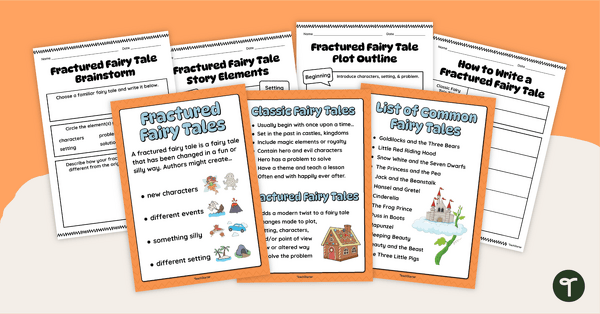
How to Write a Fractured Fairy Tale Worksheet Pack
Engage students in narrative writing and explore how to write a fractured fairy tale with this set of worksheets
- Plus Plan
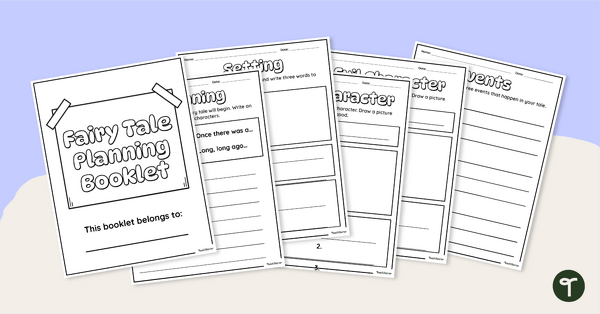
Fairy Tale Writing Templates
Use these structured pages to support storytelling and writing of fairy tales with your students.
- Plus Plan
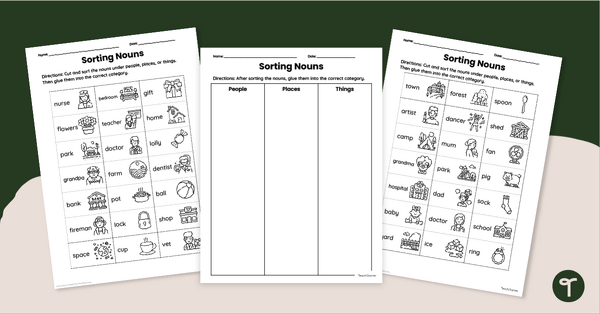
Noun Sort Worksheet Pack
Use a noun sort worksheet to help your students practise identifying people, places, and things.
- Plus Plan
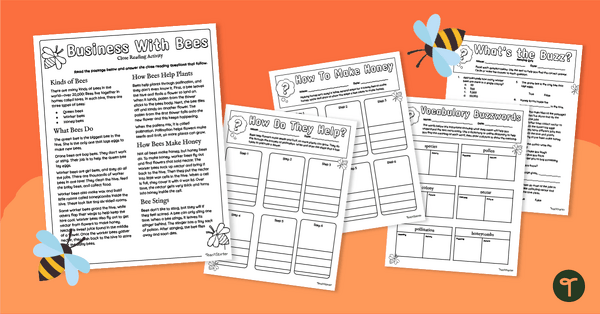
Printable Worksheets About Bees - Year 2-3 Comprehension
Use our worksheets about bees to discover what there is to know about bees, how they help plants, and how they make honey.
- Free Plan
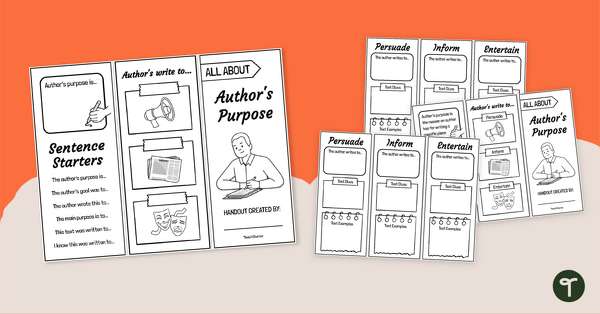
Free Author’s Purpose Handout
Use this Author’s Purpose Handout in the form of a brochure to explore the different reasons authors write.
- Plus Plan
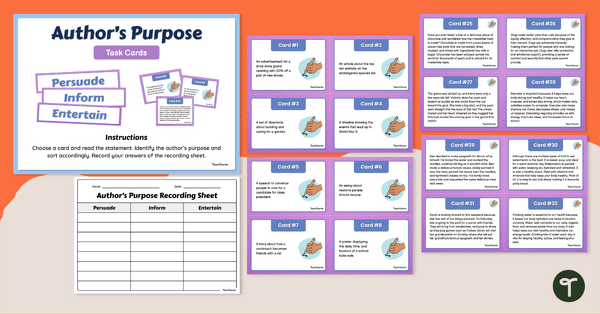
Author’s Purpose Sorting Activity
Use this author’s purpose sort to teach your students the difference between persuasive, informative and narrative writing.
- Plus Plan
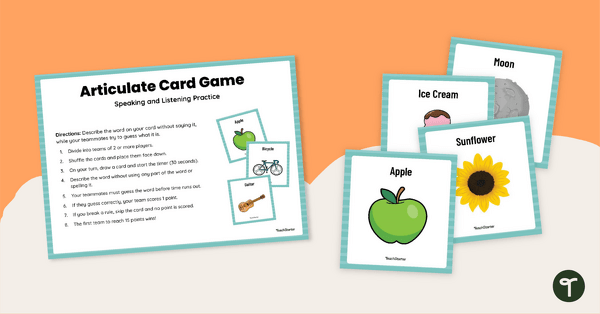
Oral Language Picture Cards - Express it
Build oral communication and vocabulary skills with Oral Language Picture Cards – Express It!
- Plus Plan
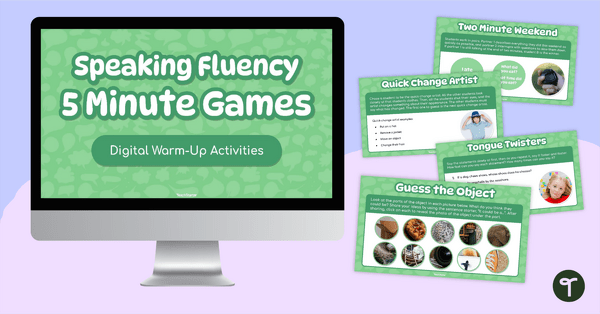
5 Minute Speaking Fluency Activities Warm Up
Improve your students' communication skills with these 5 minute speaking fluency activities.
- Plus Plan
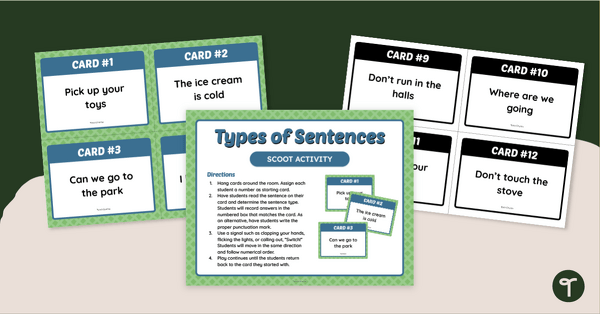
Types of Sentences Game - Year 1-2 SCOOT!
Play a round of Types of Sentences SCOOT! To help your students practise identifying types of sentences.
- Plus Plan
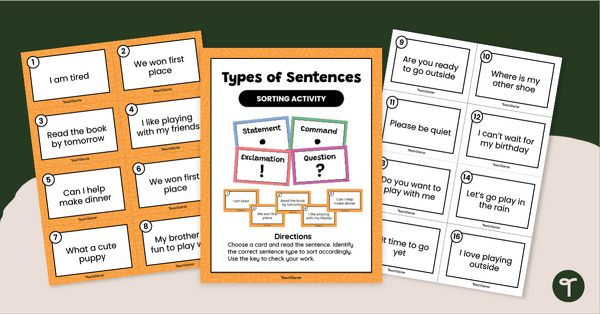
Sort It Out! - Types of Sentences Practice Activity
Practise sorting and matching examples of the four types of sentences (command, statement, question, exclamation) with a Year 1 Types of Sentences Practice Game.
- Plus Plan
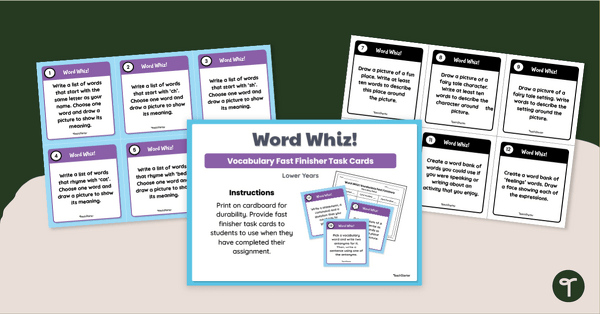
Vocabulary Fast Finisher Tasks - Middle Primary
Use fast finisher tasks to improve your middle primary students' vocabulary during classroom downtime.
- Plus Plan
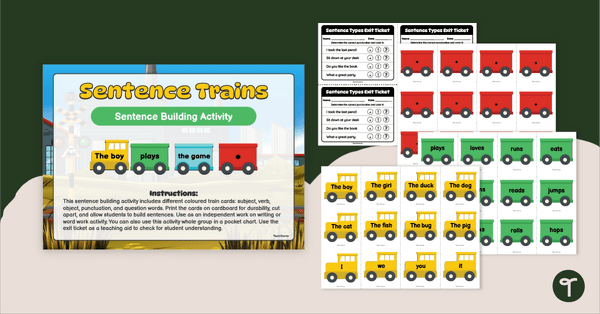
Sentence Trains - Sentence Building Activity
Teach your year 1 students about sentence types and punctuation with Sentence Trains, a fun Sentence Building Activity.
- Free Plan
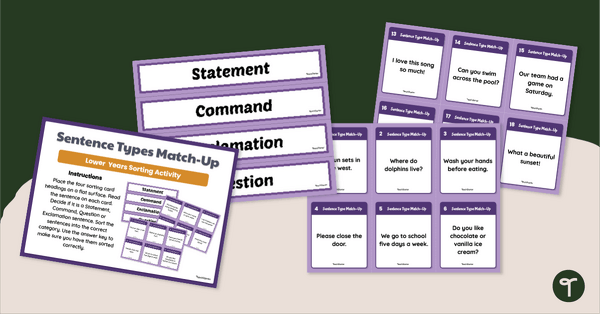
Statement, Question, Command, Explanation – Match Up Cards
Teach younger students about the four types of sentences with a printable sentence types matching activity.
- Free Plan
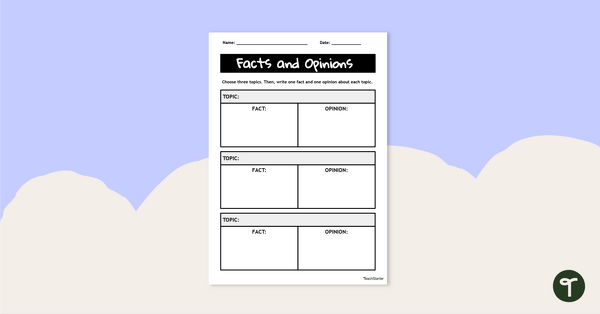
Fact and Opinion Graphic Organiser
Use this fact and opinion graphic organiser to get your students writing facts and opinions for a variety of topics.
- Free Plan
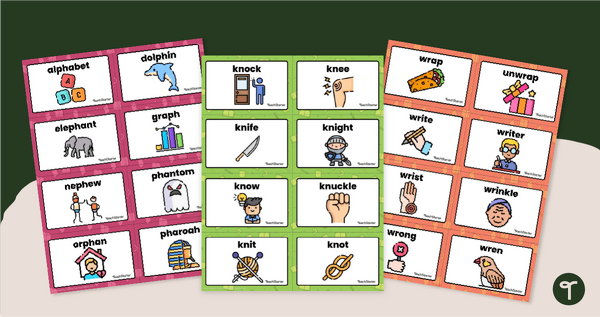
Kn, Ph & Wr Digraph Picture Cards
Use our Digraph Picture Cards to introduce your students to kn, ph and wr digraph words.
- Plus Plan
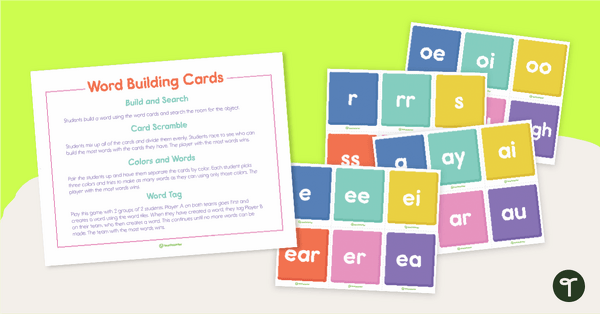
Phonics Word Builder Tiles
A comprehensive set of phonemes and their letter combinations to help your students build words.
- Free Plan
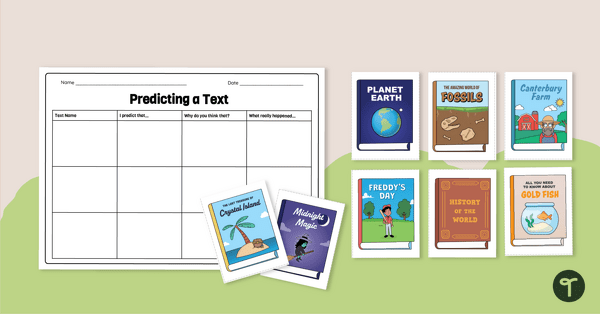
Free Story Prediction Worksheet
Encourage students to think critically before reading with this Story Prediction Worksheet.
- Plus Plan
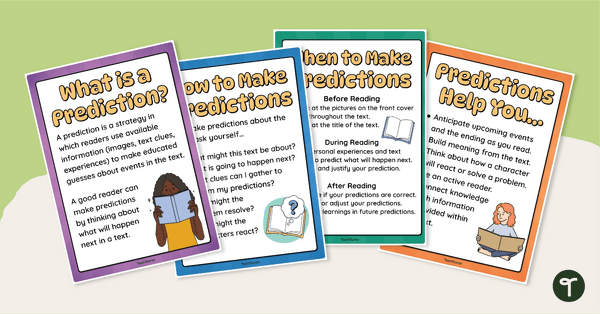
Making Predictions Poster Pack
Support student learning with these Making Predictions Posters explaining when and how to make predictions.
- Free Plan
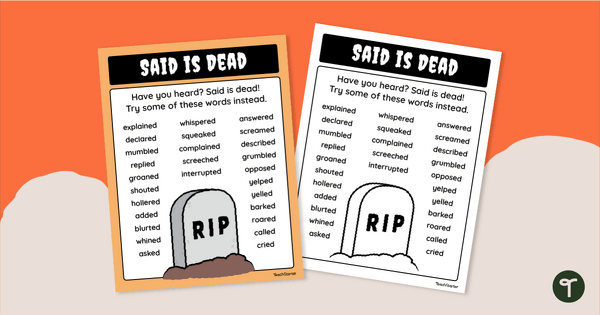
Said is Dead List - Dialogue Tags
Help your students choose a variety of dialogue tags when writing with a fun ‘Said is Dead’ Dialogue Tag List.
- Plus Plan

Handwriting Rhyme Poster
Use this handwriting rhyme to help your students prepare themselves for a handwriting lesson.
- Plus Plan
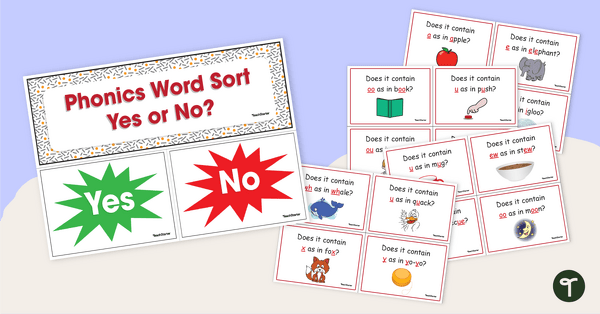
Yes or No? Phonics Sorting Activity
Use this phonics activity to help your students identify the different phonemes that make up a word.
- Plus Plan

Procedural Writing Prompt Task Cards
Need some procedural writing ideas? Download these task cards to use as a writing activity during your procedure writing unit.
- Plus Plan
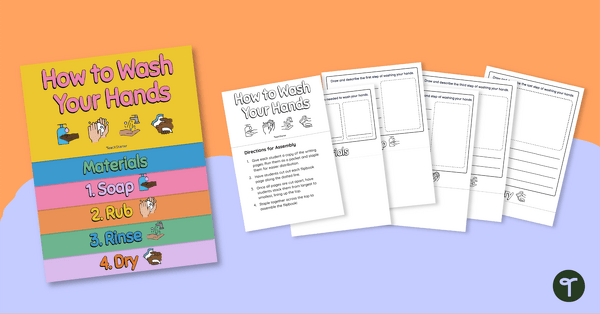
How to Wash Your Hands Flipbook
Use this “How to Wash Your Hands” procedural writing activity to help familiarise your students with the structural elements of procedure texts.
- Plus Plan
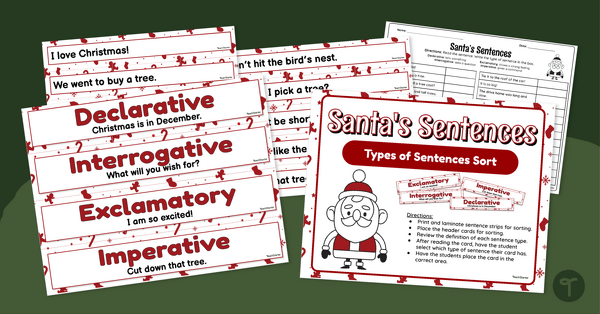
Christmas Activity Printables - Types of Sentences Sort
Help your students identify the four types of sentences with a printable Christmas sorting activity on declarative, interrogative, imperative, and exclamatory sentences.
- Plus Plan
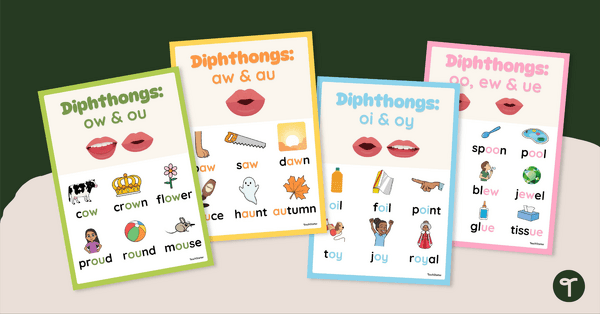
Diphthongs Classroom Posters
Display this set of posters highlighting the main diphthongs with word examples and mouth articulation images.
- Plus Plan
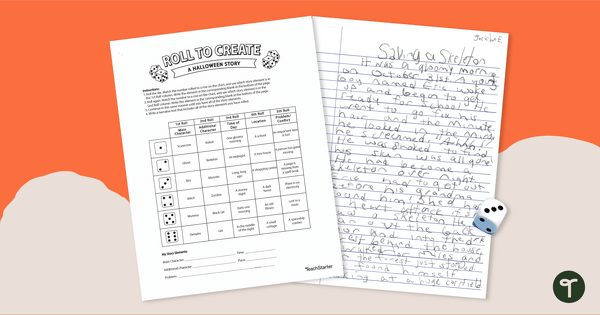
Halloween Roll-a-Story Dice Game
Spark spooky creativity with this Halloween Roll a Story game that helps students generate exciting writing prompts while making narrative writing fun and engaging.
- Plus Plan
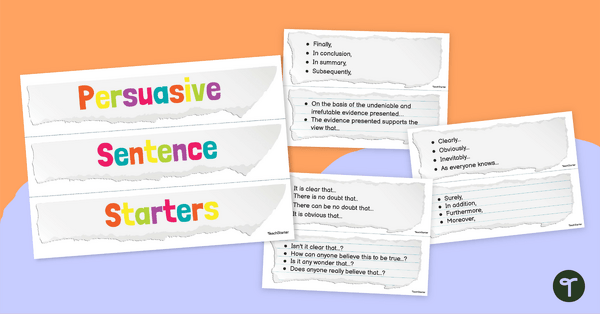
Persuasive Sentence Starters Classroom Display
Help your students begin their persuasive writing with a strong sentence starter.
- Plus Plan

Year 2 Magazine – What's Buzzing (Issue 3)
Issue 3 of our beautifully designed, 22-page reading magazine specifically designed for Year 2 students.
- Plus Plan
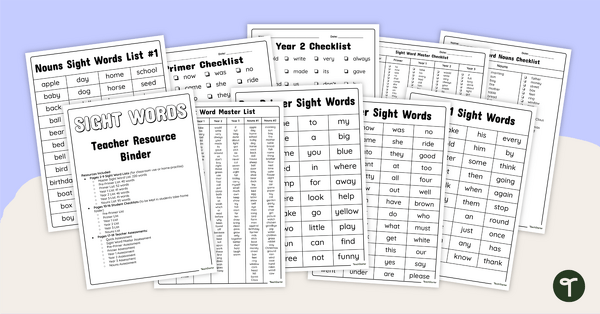
Sight Word Lists – Teacher Resource Binder
Use this collection of checklists, student pages and quick-check assessments when reviewing Dolch sight words spanning from pre-primer to year 3.
- Plus Plan
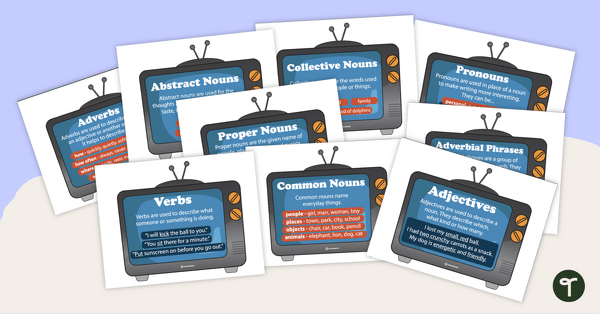
Grammar TVs
Grammar presented on TVs.
- Plus Plan
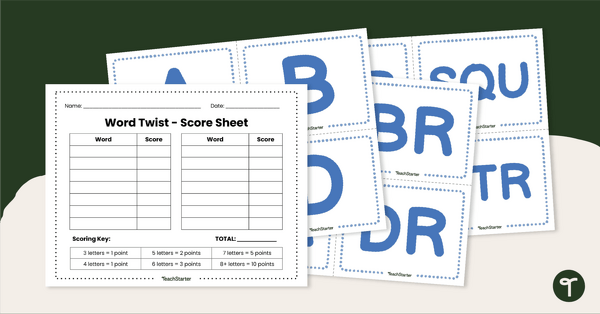
Word Twist – Word Building Game
Encourage word building in your classroom with this fun Boggle-style game!
- Plus Plan
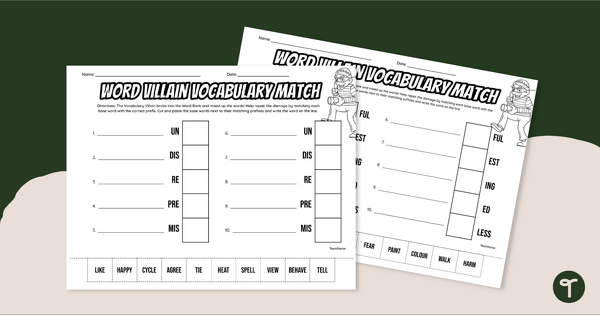
Word Villain - Prefix and Suffix Worksheets
Practise building words with suffixes and prefixes with a pair of printable vocabulary worksheets.